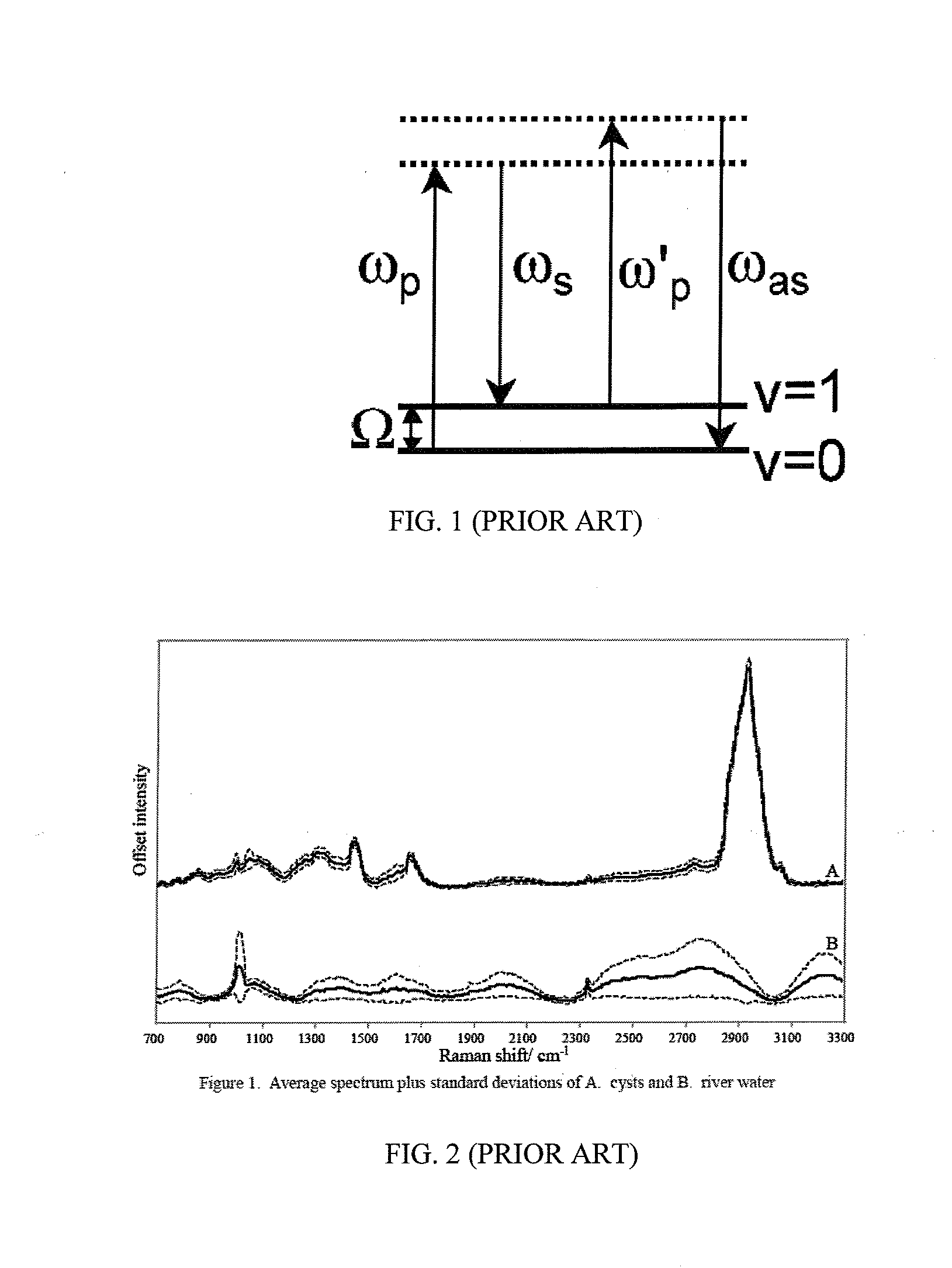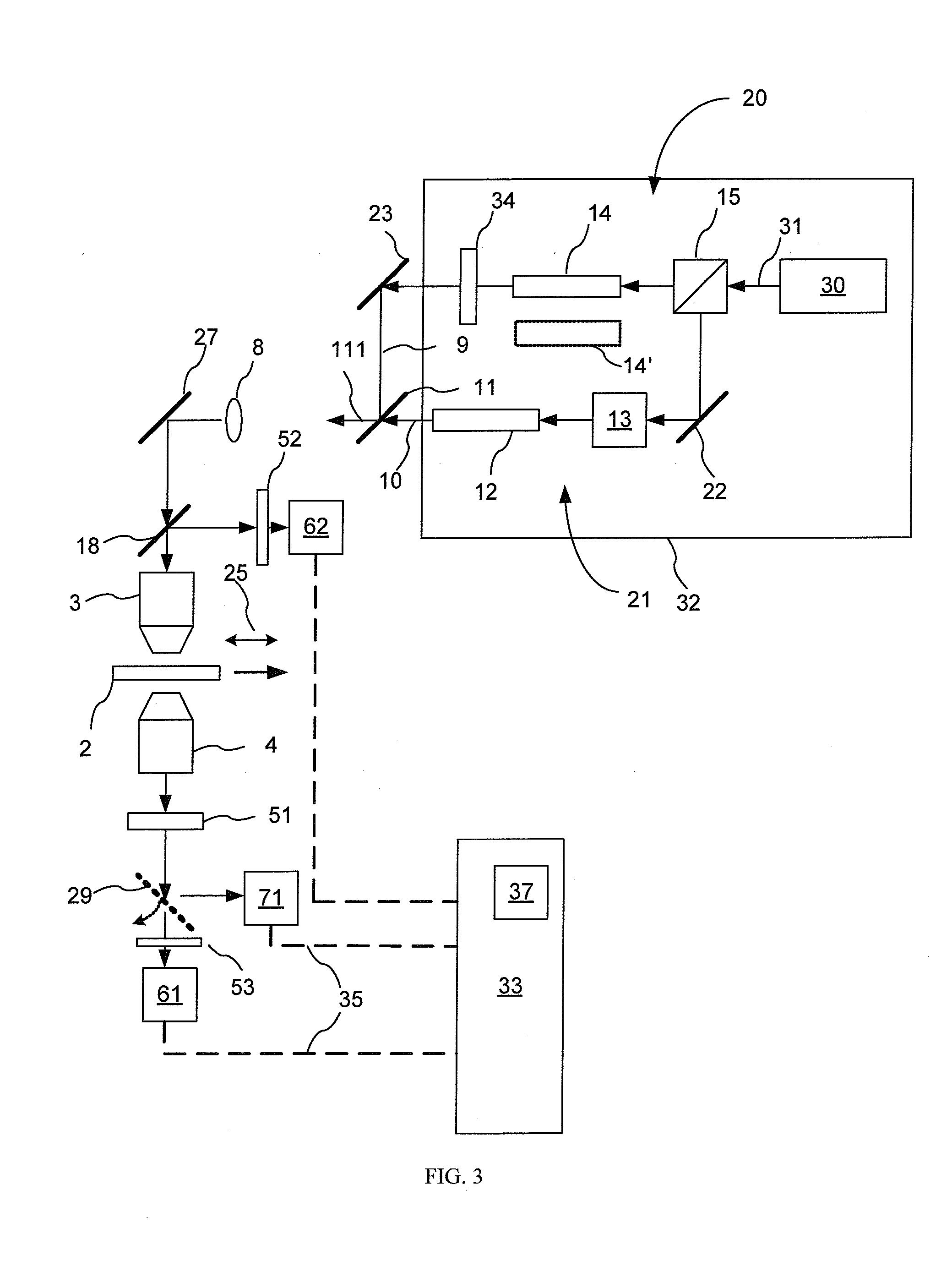Pathogen Detection Using Coherent Anti-Stokes Raman Scattering Microscopy
a scattering microscopy and anti-stokes raman technology, applied in the field of water contamination testing, can solve the problems of no specific drug therapy proven to be effective in treating cryptosporidial infections, and a major threat to human health
- Summary
- Abstract
- Description
- Claims
- Application Information
AI Technical Summary
Benefits of technology
Problems solved by technology
Method used
Image
Examples
example 1
[0058] Experiments were performed to illustrate the invention. The experimental setup was similar to the apparatus shown in FIG. 3, and utilized the CARS optical sources as illustrated in FIGS. 4 and 5.
[0059] A first experiment involved a Nd:vanadate laser 130 from High-Q Laser (Hohenems, Austria) disposed as illustrated in FIG. 4; in operation it emits radiation 131 with an output power of 10 W at 1064 nm with a pulse duration of 7 ps and a repetition rate of 76 MHz. A portion of the output 131 is split off using a power splitter 22 and used as the Stokes beam 9. The remaining 9 W is used for synchronously pumping an optical parametric oscillator (OPO) 140 (Levante, APE, Berlin) to generate the pump beam 10, which is then combined with the Stokes beam 9 to form a combined CARS excitation beam 111. The OPO signal is intracavity doubled to produce narrow spectral bandwidth radiation wavelength tunable between 780 nm and 930 nm in the form of a stream of optical pulses having a spect...
example 2
[0077] An experiment was conducted to demonstrate the feasibility of detecting a pathogen using CARS microscopy in the presence of a trapping medium. For this purpose, a sample of the organic trapping medium was obtained from EcoVu Analytics (Ottawa, ON, Canada). A small amount of this trapping medium was mixed with water and the slurry placed on a microscope glass slide. A drop of the PBS solution containing live cryptosporidium parvum oocysts was added to this. This sample was covered with a thin glass coverslip and imaged in the forward direction. Resulting CARS image is shown in FIG. 10. An image artifact 810 having the characteristic pattern, shape and size of an individual cryptosporidium oocyst is clearly discernable in the left hand bottom corner of the image. This image artifact visualizes the same lipid density pattern corresponding to the cryptosporidium parvum oocyst as described in EXAMPLE 1 and shown in FIGS. 6A,B. This pattern consists of the 1 μm bright spot in the 5...
PUM
 Login to View More
Login to View More Abstract
Description
Claims
Application Information
 Login to View More
Login to View More - R&D
- Intellectual Property
- Life Sciences
- Materials
- Tech Scout
- Unparalleled Data Quality
- Higher Quality Content
- 60% Fewer Hallucinations
Browse by: Latest US Patents, China's latest patents, Technical Efficacy Thesaurus, Application Domain, Technology Topic, Popular Technical Reports.
© 2025 PatSnap. All rights reserved.Legal|Privacy policy|Modern Slavery Act Transparency Statement|Sitemap|About US| Contact US: help@patsnap.com



